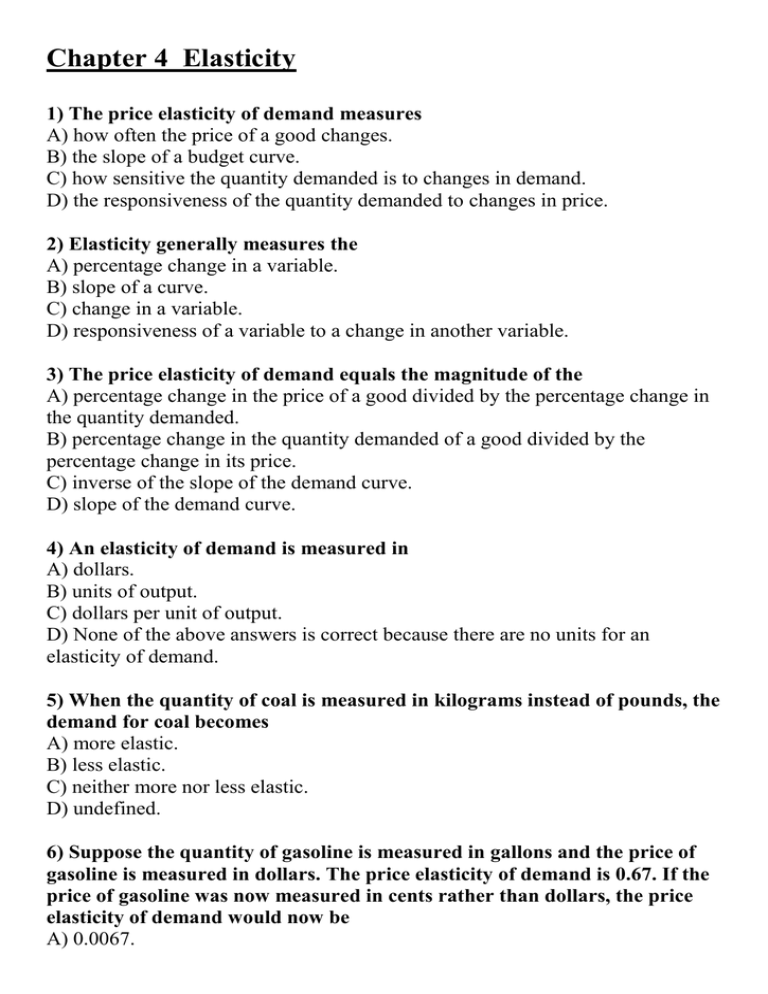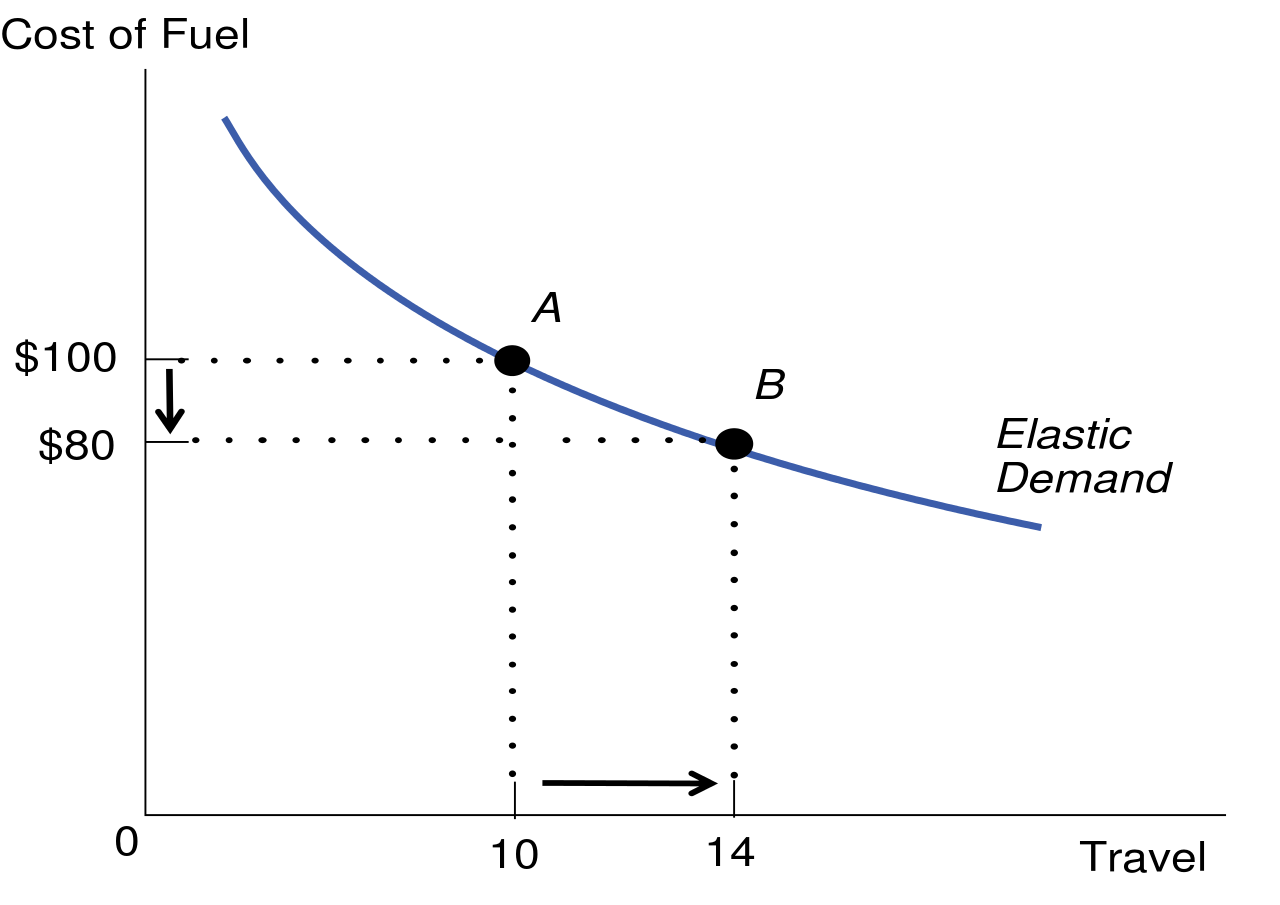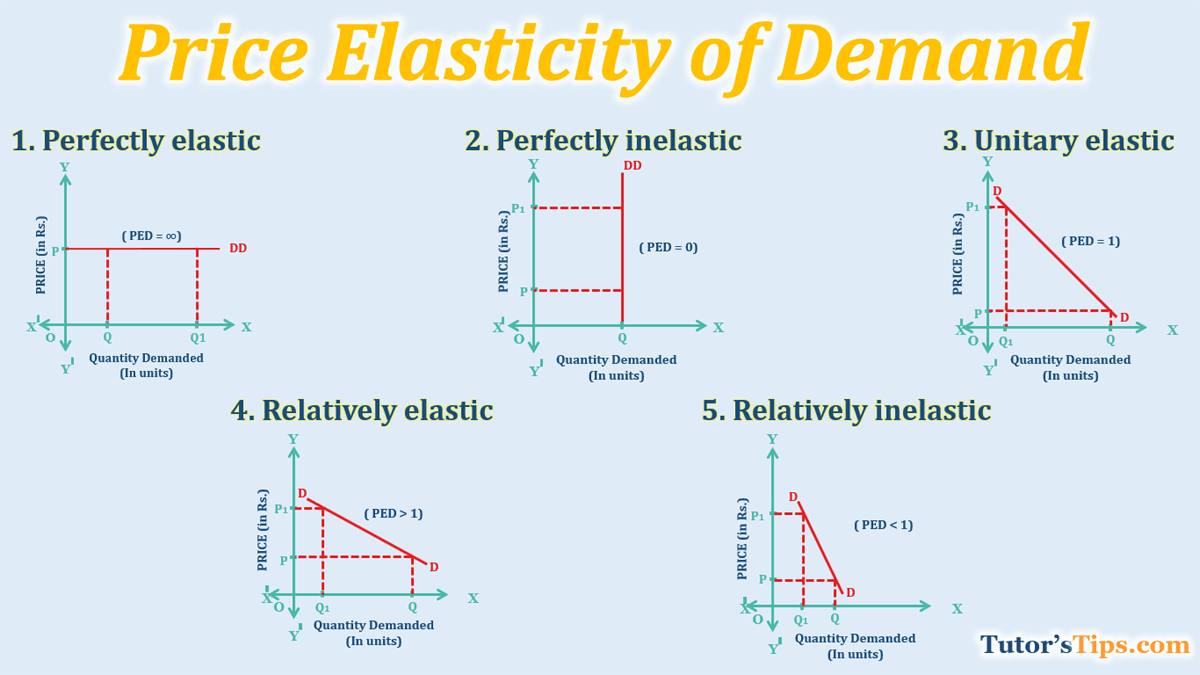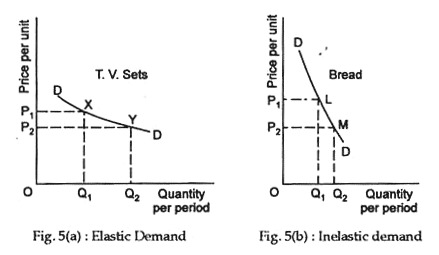The Concept of Price Elasticity of Demand Measures
The price elasticity of demand measures a. The sensitivity of consumer purchases to price changes.

1 What Is The Price Elasticity Of Demand
The sensitivity of consumer purchases to price changes.

. The price elasticity of demand can according to this approach be mathematically expressed as -. Change in Quantity Demanded Change in Price. The price elasticity of demand is always negative due to the inverse relationship between the price and quantity demanded.
Products D E and F have smaller demand changes than alterations in price. How much more of a good consumers will demand when incomes rise. Where ep Coefficient of price elasticity of demand.
The extent to which the demand curve shifts as the result of a price decline. The increase in demand that will occur from a change in one of the nonprice determinants of demand. Change in price new price P2 initial price P1 initial price P1 100.
Price elasticity of demand indicates the degree of responsiveness of quantity demanded of a good to the change in its price other factors such as income prices of related commodities that determine demand are held constant. In other words it measures how much people react to a change in the price of an item. Price elasticity refers to how the quantity demanded or supplied of a good changes when its price changes.
The number of buyers in a market. The Cross-Price Elasticity of DemandThe cross-price elasticity of demand measures how the quantity demanded of one good changes as the price of another good changes. But for the sake of simplicity in understanding the magnitude of response of quantity demanded to the change in the price we ignore the negative sign and take into.
A buyers responsiveness to a change in the price of a good. Then PED -2010 -20 If the price of petrol increased from 130p to 140p and demand fell from 10000 units to 9900. Price elasticity of supply.
The cross-Price Elasticity of Demand is also an economic concept that measures the responsiveness in quantity demanded of one good when the Price for other good changes. What is Price Elasticity. The responsiveness of quantity demanded to price changes.
This measurement is calculated by taking the percentage change in the quantity. Change in quantity demanded new quantity Q2 initial quantity Q1 initial quantity Q1 100. The price elasticity of demand in this situation would be 05 or 05.
Change in qua n ti t y demanded change in p r i c e. Cross Elasticity of Demand. Precisely price elasticity of demand is defined as the ratio of the.
The slope of the demand curve. From P to M at point P p 1 8 q 1 10 and at point M p 2 6 q 2 12. Y s measures the income sensitivity ΔR measures change in consumer expenditure and ΔY measures change in income.
The number of buyers in a market. The slope of the demand curve. In this image demand for products A and B changes to a greater extent than alterations in price.
Also called cross-price. On the basis of this formula we can measure arc elasticity of demand when there is a movement either from point P to M or from M to P. The concept of price elasticity of demand measures.
100 1 rating 6. The concept of price elasticity of demand measures A. -the number of buyers in a market.
The cross elasticity of demand is an economic concept that measures the responsiveness in the quantity demanded of one good when the price for another good changes. That is Percentage change in quantity demanded of. -the slope of the demand curve.
In Panel d the price elasticity of demand is equal to 050 throughout its range. Suppose a 10 percent increase in income causes consumer expenditure on a good to increase by 12 percent the income sensitivity of that good is 12. The Price Elasticity of Demand formula is.
Since the change in demand is smaller than the change in price we can conclude that demand is relatively inelastic. The concept of price elasticity of supply can be applied to labor to show how the quantity of labor supplied responds to changes in wages or salaries. The extent to which the demand curve shifts as the result of a price decline.
Demand elasticity refers to how sensitive the demand for a good is to changes in other economic variables such as the prices and consumer income. Price elasticity of demand PED measures the responsiveness of demand after a change in price. Also called PES or E s is a measure that shows how the quantity of supply is affected by a change in the price of a good or service.
The sensitiveness of quantities demanded to price changes. If price increases by 10 and demand for CDs fell by 20. The concept of price elasticity of demand measures.
The slope of the demand curve. Demand elasticity is calculated by taking the. We can use this equation to calculate the effect of.
The increase in demand as additional buyers enter the market. The following equation enables PED to be calculated. To calculate price elasticity of demand you use the formula from above.
The four factors that affect price elasticity of demand are 1 availability of substitutes 2 if the good is a luxury or a necessity 3 the proportion of income spent on the good and 4 how much time has elapsed since the time the price changed. The elasticity measures encountered so far in this chapter all relate to the demand side of the market. The extent to which the demand curve shifts as the result of a price decline.
Price elasticity of demand PED shows the relationship between price and quantity demanded and provides a precise calculation of the effect of a change in price on quantity demanded. For example when the price of a commodity was Rs 10 per. This means that for every 1 increase in price there is a 05 decrease in demand.
It is calculated as the percentage change in quantity demanded of good 1 divided by the percentage change in the price of good 2. When the percentage change in price is less than the resulting percentage change in quantity. -the extent to which the demand curve shifts as the result of a price decline.
Empirical estimates of demand often show curves like those in Panels c and d that have the same elasticity at every point on the curve. The demand curve in Panel c has price elasticity of demand equal to 100 throughout its range. The elasticity of Demand measures the extent to which quantity demanded of a commodity increase or decrease in response to increase or decrease in any of its quantitative determinants.
The concept of price elasticity of demand measures. The Concept of Price Elasticity of Demand. It is also useful to know how responsive quantity supplied is to a change in price.
The number of buyers in a market. Price elasticity of demand refers to how changes to price affect the quantity demanded of a good. The formula for price elasticity of demand at the mid-point C in Figure 4 of the arc on the demand curve is.

Price Elasticity Of Demand Types And Its Determinants Tutor S Tips

Price Elasticity Of Demand With Formula

Price Elasticity Of Demand Ppt Video Online Download

Price Elasticity Of Demand Definition Formula Coefficient Examples Etc
No comments for "The Concept of Price Elasticity of Demand Measures"
Post a Comment